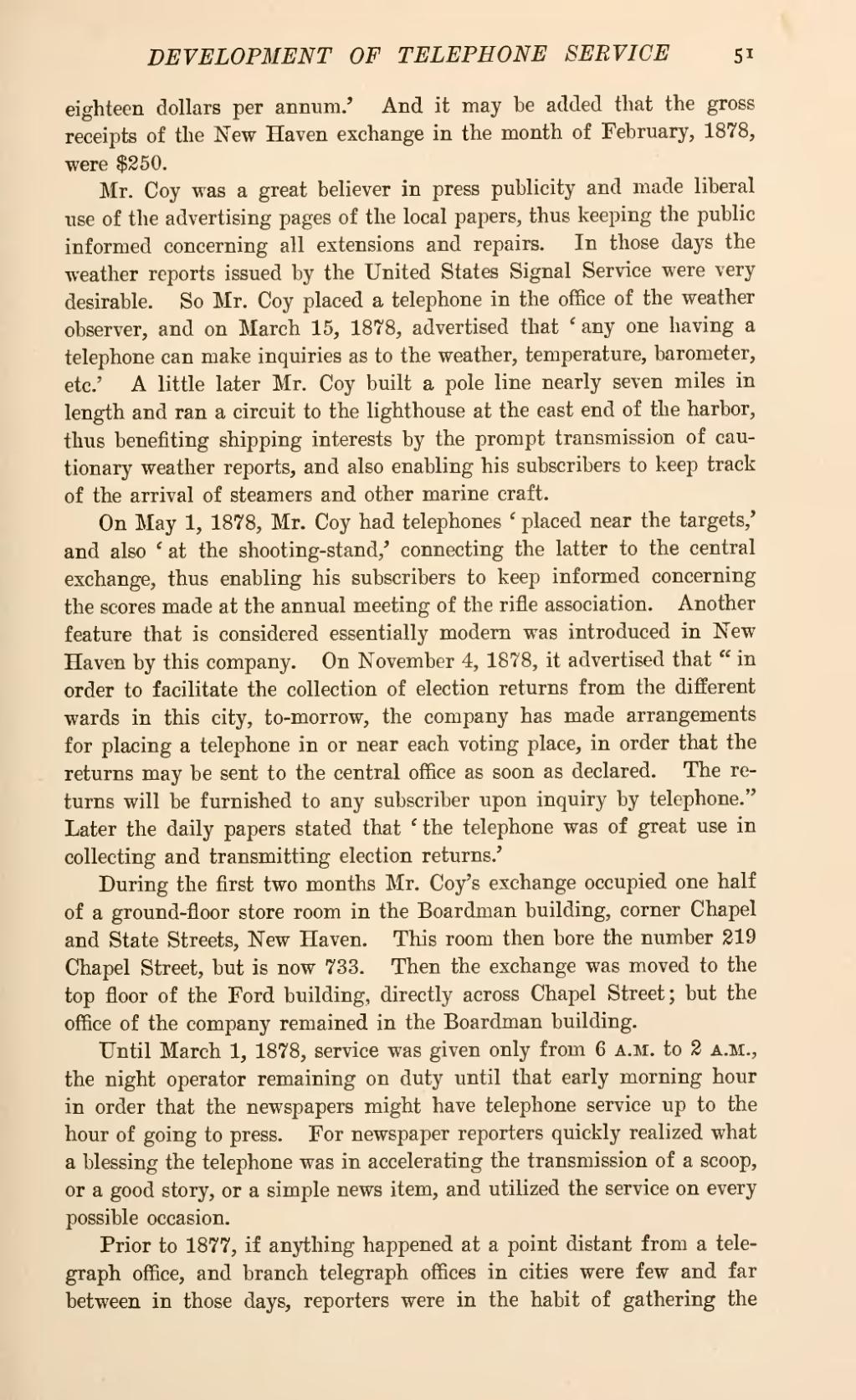eighteen dollars per annum.' And it may be added that the gross receipts of the New Haven exchange in the month of February, 1878, were $250.
Mr. Coy was a great believer in press publicity and made liberal use of the advertising pages of the local papers, thus keeping the public informed concerning all extensions and repairs. In those days the weather reports issued by the United States Signal Service were very desirable. So Mr. Coy placed a telephone in the office of the weather observer, and on March 15, 1878, advertised that 'any one having a telephone can make inquiries as to the weather, temperature, barometer, etc' A little later Mr. Coy built a pole line nearly seven miles in length and ran a circuit to the lighthouse at the east end of the harbor, thus benefiting shipping interests by the prompt transmission of cautionary weather reports, and also enabling his subscribers to keep track of the arrival of steamers and other marine craft.
On May 1, 1878, Mr. Coy had telephones 'placed near the targets,' and also 'at the shooting-stand,' connecting the latter to the central exchange, thus enabling his subscribers to keep informed concerning the scores made at the annual meeting of the rifle association. Another feature that is considered essentially modern was introduced in New Haven by this company. On November 4, 1878, it advertised that "in order to facilitate the collection of election returns from the different wards in this city, to-morrow, the company has made arrangements for placing a telephone in or near each voting place, in order that the returns may be sent to the central office as soon as declared. The returns will be furnished to any subscriber upon inquiry by telephone." Later the daily papers stated that 'the telephone was of great use in collecting and transmitting election returns.'
During the first two months Mr. Coy's exchange occupied one half of a ground-floor store room in the Boardman building, corner Chapel and State Streets, New Haven. This room then bore the number 219 Chapel Street, but is now 733. Then the exchange was moved to the top floor of the Ford building, directly across Chapel Street; but the office of the company remained in the Boardman building.
Until March 1, 1878, service was given only from 6 a.m. to 2 a.m., the night operator remaining on duty until that early morning hour in order that the newspapers might have telephone service up to the hour of going to press. For newspaper reporters quickly realized what a blessing the telephone was in accelerating the transmission of a scoop, or a good story, or a simple news item, and utilized the service on every possible occasion.
Prior to 1877, if anything happened at a point distant from a telegraph office, and branch telegraph offices in cities were few and far between in those days, reporters were in the habit of gathering the

